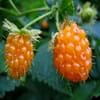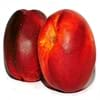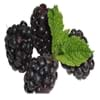Health Benefits
Arthritis prevention, Asthma treatment, Cancer prevention, Kidney stone treatment, Liver health
Arthritis treatment, Cancer prevention, High Cholesterol Regulation, Lower blood pressure, Helps Prevent cataract, Prevents gall stones, Ulcer treatment, Weight loss properties
General Benefits
Anti oxidant properties, Boosts immune system, Cures cough, Eye care, Fights against infections, Helps in weight loss, Improves eye vision, Maintains healthy cholesterol level, Treatment of common cold
Boosts respiratory health, Eliminate parasites and infections, Protects against birth defects, Strengthens bones
Skin Benefits
Anti-aging benefits, Brightens and lightens complexion, Reduces wrinkles, Treatment of dark spots
Heals sunburn, Hydrates skin, Skin rejuvenation
Hair Benefits
Prevents hair loss, Protects hair, Regulates hair growth, Treatment of dandruff
Regulates hair growth
Allergy Symptoms
Abdominal pains, Breathing difficulty, Decrease in blood pressure, Diarrhea, Dizziness, Eczema, Hives, Lightheadedness, Nausea, Runny nose, Sneezing, Swelling of mouth, tongue or lips, Vomiting, Wheezing
Abdominal cramps, Anaphylaxis, Digestive Problems, Dizziness, Eczema, Fainting, Hives, Inflammation, Itching, Tingling sensation in wrist and face, Vomiting, Wheezing
Side Effects
Allergic reaction
Kidney and gallbladder diseases
Best Time to Eat
As a snack in the late afternoon, Eat the fresh ones, avoid mixing with any other foods, don't eat after meal., Morning time (before lunch), Strictly avoid empty stomach
Along with meal, Don't eat after meal, Morning time (before lunch)
Vitamin B5 (Pantothenic Acid)
Vitamin C (Ascorbic Acid)
Vitamin K (Phyllochinone)
Phytosterol
Not Available
Calories in Fresh Fruit with Peel
Not Available
Calories in Fresh Fruit without Peel
Calories in Frozen Form
Not Available
Not Available
Calories in Dried Form
Not Available
Type
Citrus, Tree fruit
Berry
Season
All seasons
All seasons
Varieties
Duncan, Marsh and Oro Blanco
Jarrahdale, Peanut, Lakota, Cow, Sugar, Caribean, Red kuri, Buttercup and Pink lady
Color
White
Blue, Green, Orange, Red, White
Inside Color
Creamy Yellow
Creamy Yellow
Texture
Succulent
Fibrous
Taste
Tart
Creamy, Soft, Sweet
Soil Type
Loam, Well-drained
Clay loam, Sandy loam, Well-drained
Climatic Conditions
Humid, Warm
Warm to hot climate
Facts about
- February is known as National Grapefruit Month.
- It is called as state fruit of texas.
- No mechanical devices are used while picking grapefruits, they are always handpicked.
- The name pumpkin has its roots in the Greek word ‘pepon’, meaning ‘large melon’.
- The largest pumpkin ever grown weighed 1,140 pounds.
- Pumpkins were once known for removing freckles & curing snake bites.
Other Countries
Argentina, India, Israel, Mexico, South Africa, Sudan, Thailand, Turkey, United States of America
Egypt, India, Indonesia, Iran, Italy, Mexico, Russia, Spain, United States of America
Top Importer
Europe
United States of America
Top Exporter
United States of America
China
Botanical Name
Citrus paradisi
Cucurbita maxima
Synonym
Not Available
Cucurbita pepo, Squash
Subkingdom
Tracheobionta
Tracheobionta
Division
Magnoliophyta
Magnoliophyta
Class
Magnoliopsida
Magnoliopsida
Subclass
Rosidae
Dillenhidae
Order
Sapindales
Cucurbitales
Family
Rutaceae
Cucurbitaceae
Species
C. × paradisi
Cucurbita mixta
Generic Group
Citrus fruit
Not Available
Compare White Grapefruit and Pumpkin
It is important compare White Grapefruit and Pumpkin as both the fruits have a different nutritional value. Their comparison can be done on the basis of their vitamin and mineral content, calories, benefits as well as characteristics, making it easier for us to choose the best fruit for our diet. Their general health benefits are as follows:
White Grapefruit Benefits: anti oxidant properties, boosts immune system, cures cough, eye care, fights against infections, helps in weight loss, improves eye vision, maintains healthy cholesterol level and treatment of common cold.
Pumpkin Benefits: boosts respiratory health, eliminate parasites and infections, protects against birth defects and strengthens bones.
Fruits are also used as a remedy for various hair problems. The hair benefits of White Grapefruit are: prevents hair loss, protects hair, regulates hair growth and treatment of dandruff and hair benefits of Pumpkin are: regulates hair growth. Some fruits are known to cause allergic reactions. The allergy symptoms of first fruit are: abdominal pains, breathing difficulty, decrease in blood pressure, diarrhea, dizziness, eczema, hives, lightheadedness, nausea, runny nose, sneezing, swelling of mouth, tongue or lips, vomiting and wheezing and the symptoms of second fruit are: abdominal cramps, anaphylaxis, digestive problems, dizziness, eczema, fainting, hives, inflammation, itching, tingling sensation in wrist and face, vomiting and wheezing. Get sorted White Grapefruit vs Pumpkin comparison with the help of fruit comparison tool by fruitvs.com.









